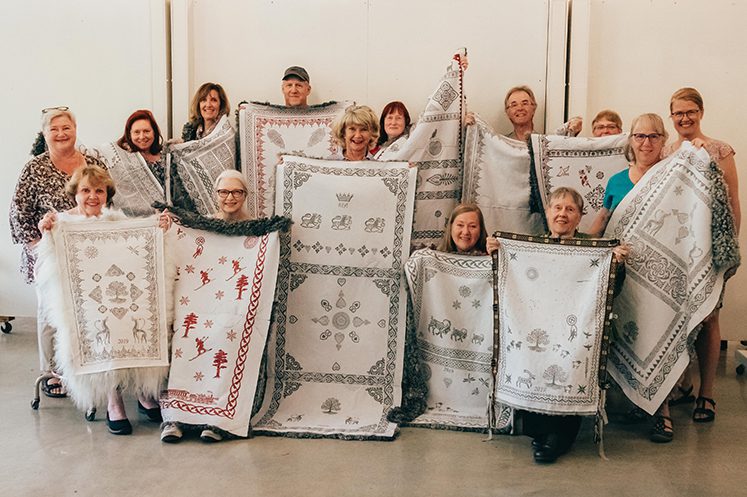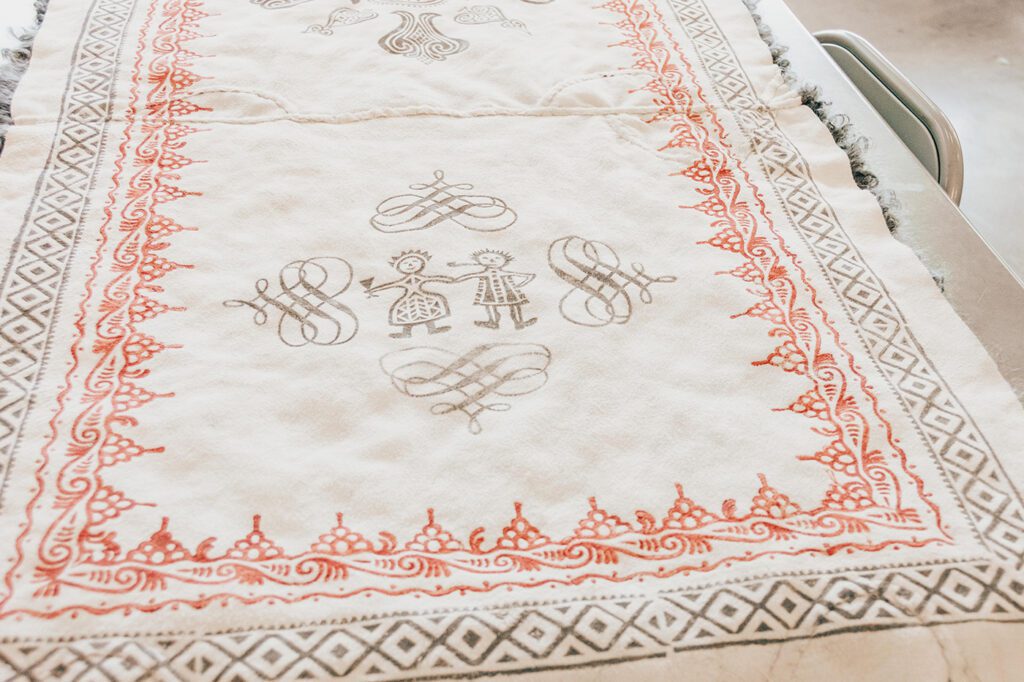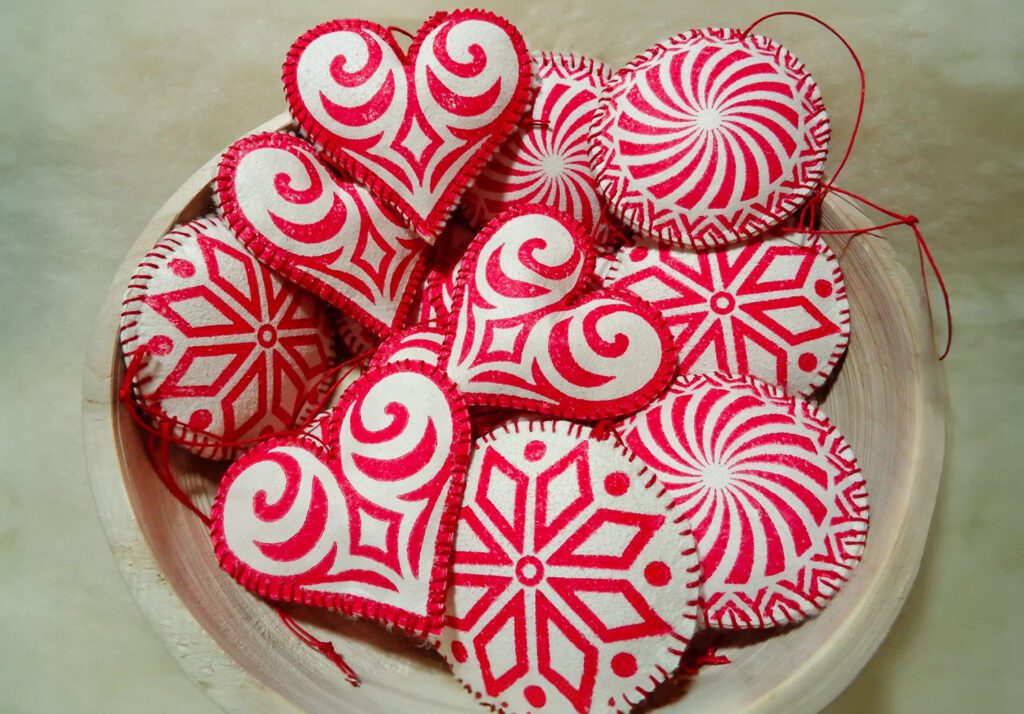What Is Skinnfell?
An introduction to Norwegian Sheepskin Coverlets
By Laurann Gilbertson
Sheepskins have been used as warm bedding in rural Norway for centuries. When the sheepskins are sewn together, they become a textile called skinnfell (pronounced shin-fell). The warm fleece side went down toward the sleeper. The top, the smooth skin side, could be covered with a colorful handwoven coverlet or printed with graphic motifs. Once widespread and common, this bedding tradition would have faded away if not for the work of several dedicated women, such as Britt Solheim who introduced Americans to the art and tradition of skinnfell through classes she taught at Vesterheim over the years.
Traditionally, the tanning, sewing, and printing of sheepskins was the work of men, many of whom were specialists and traveled from farm to farm. The skinnfell maker carefully cut the skins so that he used the material economically. He might use four, six, or seven skins for a skinnfell. Patching was often necessary for holes and where the legs of the animal had been. The edges of patches and seams were covered with narrow strips of leather taken from the belly. Printing was the final step, though many skinnfeller were left plain. For comfort and convenience, skinnfeller were usually narrower at the foot end and wider at the shoulder end. Another practical feature was a small piece of leather marking the head end or the center.
Although sheepskin coverlets have been used throughout Scandinavia, the printing tradition was special to Norway. Blocks of close-grained birch were carved with individual motifs or border designs. Animals, plants, suns, hearts, and knots have been popular in the past and today. Wavy and zigzag lines are common borders.
The ink was made from fermented alder bark. The liquid had to be reduced to the perfect consistency. Too thick and the ink would not soak into the skin; too thin and the ink would bleed. Today, artists like Britt use fabric dye mixed in colors to compliment the natural browns, grays, and creams of the fleece from Norwegian and imported breeds of sheep.
Whether for warmth or beauty, sheepskin coverlets are welcome additions to Scandinavian homes today. They also offer exciting creative opportunities for American fiber artists.
Vesterheim is offering an introductory course February 10-11, 2024, where students will learn how to print, cut, and sew heart-shaped ornaments from a sheepskin or skinnfell. Instructors, David and Lynn Susag, will share their traditional Norwegian wood blocks to use in class and students will stamp a variety of beautiful ornaments (perfect for Valentine’s Day). As student’s progress, they will also have the option of making wrist warmers. At the end of the class, students will have the skills and enough material to continue sewing projects at home. Learn more.
This post has been edited and republished from the article “Norwegian Sheepskin Coverlets,” written by Vesterheim Chief Curator Laurann Gilbertson and originally printed in Fiberarts, Summer 2010: 62-63.



